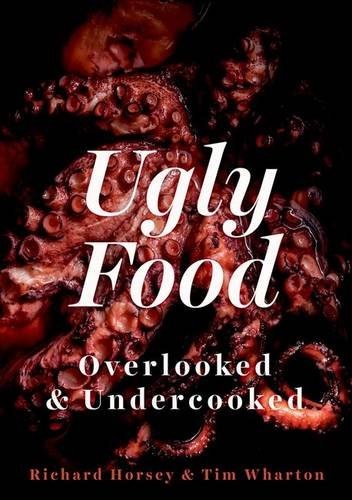How eating ‘ugly food’ can help the environment
April 24, 2017 by Darcie Why don’t we
eat more octopus? What about gurnard and other ugly fish? Cheeks,
feet and offal are cheap and delicious, but people prefer steaks
and chops. What about rabbits and squirrels? And what’s wrong with
ugly vegetables? These are the types of questions that spurred Tim
Wharton and Richard Horsey to write their cookbook Ugly Food: Overlooked and Undercooked.
Why don’t we
eat more octopus? What about gurnard and other ugly fish? Cheeks,
feet and offal are cheap and delicious, but people prefer steaks
and chops. What about rabbits and squirrels? And what’s wrong with
ugly vegetables? These are the types of questions that spurred Tim
Wharton and Richard Horsey to write their cookbook Ugly Food: Overlooked and Undercooked.
The book aims to change the way people think about ingredients that are neglected, overlooked, or forgotten by (mainly Western) eaters. They are all tasty, sustainable and cheap, and easy to cook when you know how, say the authors. Using an unpretentious, practical approach, Wharton and Horsey offer tips and tricks on preparing these undervalued foods.
In an interview with NPR’s The Salt, Wharton explained how a shared love of food and a desire to delve “beyond the [chicken] breast” led the pair to write the cookbook. They feel that the food industry has removed us from the “messy reality” of how food gets to the supermarket – you won’t find heads, feets, or giblets in the meat case of most stores, for instance, and all of the fruit and vegetables are blemish-free, their flavor often suffering as a result of their beauty. The authors point out that this sanitized version of food is a rather recent development.
More than just a cookbook, Ugly Food is a culinary “manifesto” that delves into questions of why why we embrace some ingredients but dismiss others that are just as nutritious, often less expensive, and that offer alternatives to resources that are being rapidly depleted. “[We can] get tasty, sustainable, environmentally sound ingredients,” says Horsey, “if [we] move away from the idea of the food industry as a purveyor of impossibly perfect ideals and start seeing it as a purveyor of grubby things that… taste great.”
Categories
- All Posts (6940)
- Antipasto (2135)
- Author Articles (247)
- Book News (935)
- Cookbook Giveaways (983)
- Cookbook Lovers (257)
- Cooking Tips (109)
- Culinary News (299)
- Food Biz People (552)
- Food Online (791)
- Holidays & Celebrations (272)
- New Cookbooks (149)
- Recipes (1500)
- Shelf Life With Susie (231)
- What's New on EYB (133)
Archives
Latest Comments
- Atroyer7 on Danube Cookbook Review and Giveaway
- demomcook on What foods do you look forward to the most for each season?
- demomcook on Danube Cookbook Review and Giveaway
- Darcie on How cookbooks can help build resilience
- mholson3 on Danube Cookbook Review and Giveaway
- Rinshin on How cookbooks can help build resilience
- sarahawker on Danube Cookbook Review and Giveaway
- Sand9 on Danube Cookbook Review and Giveaway
- hankintoby29 on Heritage Cookies of the Mediterranean World – Cookbook Giveaway
- WBB613 on Feasts of Good Fortune Cookbook Giveaway